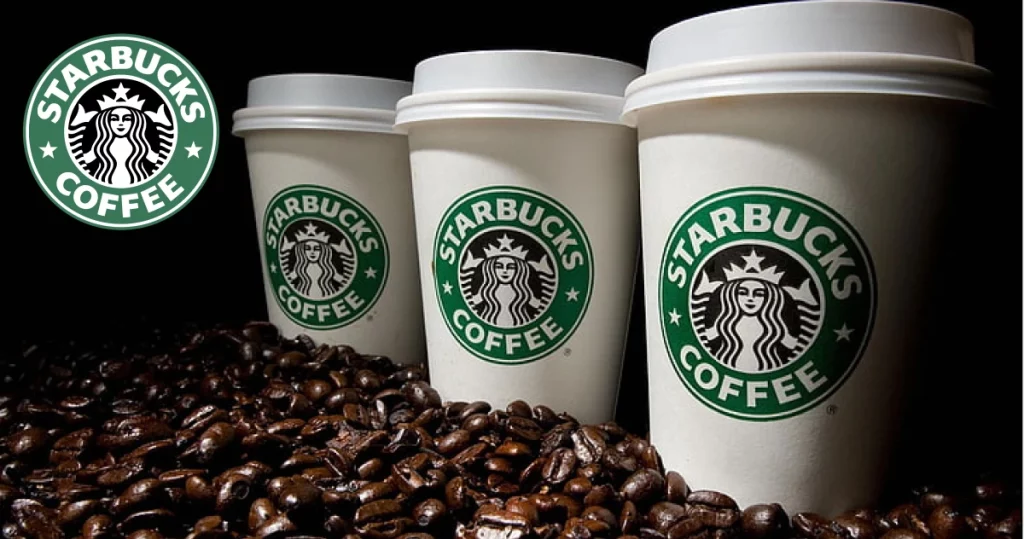Starbucks, a brand that became synonymous with coffee has created a sensation in the world with its coffeehouse culture. Have you wondered how? Well, to answer this question we will delve into the case study of Starbucks.
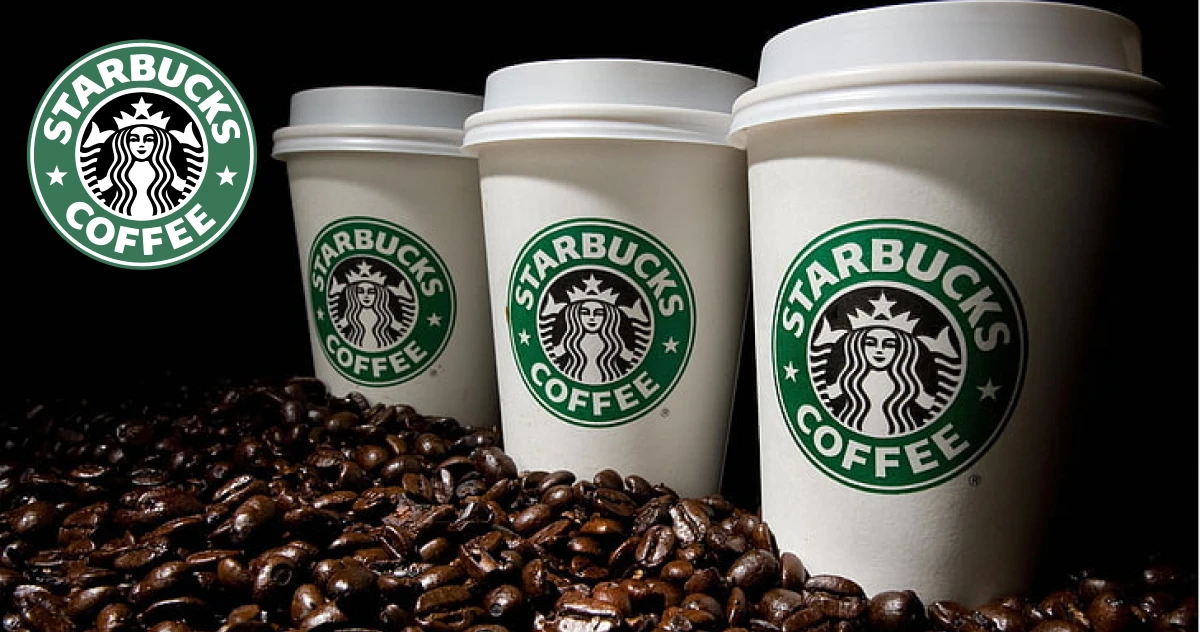
Stay tuned!
(A) Starbucks: A Brief Overview
Let’s buckle up for a Starbucks journey! Founded back in 1971, this coffee giant now reigns supreme as the world’s largest coffeehouse chain, with its home base in the city of Seattle, Washington.
Before diving deeper into the Starbucks case study, let’s have a look at the company’s profile-
| Name of the Company | Starbucks Corporation |
| Company Type | Public |
| Industry | Coffee Shop |
| Founded | March 30, 1971 |
| Founders | Jerry Baldwin, Zev Siegl, Gordon Bowker |
| Headquarters | Starbucks Center, Seattle, Washington, U.S |
| Number of Locations (2023) | 38,038 |
| Area Served | 84 Countries |
| Key People | Mellody Hobson (Chairwoman), Laxman Narasimhan (CEO) |
| Products | Coffee Beverages, Smoothies, Tea, Baked Goods, Sandwiches |
Fast forward to November 2022, and you’ve got Starbucks waving its coffee wand in a staggering 35,711 stores across 80 countries. And when you zoom in on the U.S., you’re looking at a whopping 15,873 Starbucks hotspots.
Here’s the scoop – over 8,900 are Starbucks-run, and the rest are running under licensed partnerships.
Now, let’s talk coffee vibes. Starbucks is the unsung hero of the second wave of coffee culture, dishing out an array of coffee delights. Think hot espresso, chill Frappuccinos, and a lineup of pastries and snacks that’s strong enough to trigger your taste buds.
Oh, and did you know some Starbucks treats are exclusive to certain locations? How? You may wonder. Well, here’s a bonus – most Starbucks joints worldwide offer free Wi-Fi. Coffee and connectivity – a match made in heaven.
So there you have it – the Starbucks saga!
(B) Business Overview of Starbucks Case Study
Understanding the business perspective is one of the essential parts of the Starbucks case study. Reason? You will get to know how Starbucks is performing in the market in terms of financials and business.
Go through the table given below-
| Business Aspects of Starbucks | Details |
| Market Capitalization (2024) | $105.82 billion |
| Revenue (2023) | $35.976 billion |
| Operating Income (2022) | $4.62 billion |
| Net Income (2022) | $3.28 billion |
| Total Assets (2022) | $27.98 billion |
| Total Equity (2022) | -$8.70 billion |
| Expenses (2023) | $30.584 billion |
| Profits (2023) | $25.108 billion |
In today’s date, the coffee giant is flexing a market capitalization of a whopping $105.82 billion – that’s some serious coffee beans.
Now, rewind to 2023, and Starbucks made it rain with a revenue of $35.976 billion. But what about the nitty-gritty? Operating income in 2022 hit $4.62 billion, while net income settled at $3.28 billion. These aren’t just numbers; they’re the financial pillars of Starbucks.
That’s not all!
Hold onto your coffee cups; we’re diving into assets and equity. Total assets in 2022 clocked in at $27.98 billion – that’s like a treasure chest of coffee goodness. But here’s a twist – total equity dipped to -$8.70 billion. It’s like a plot twist in a coffee-fueled drama.
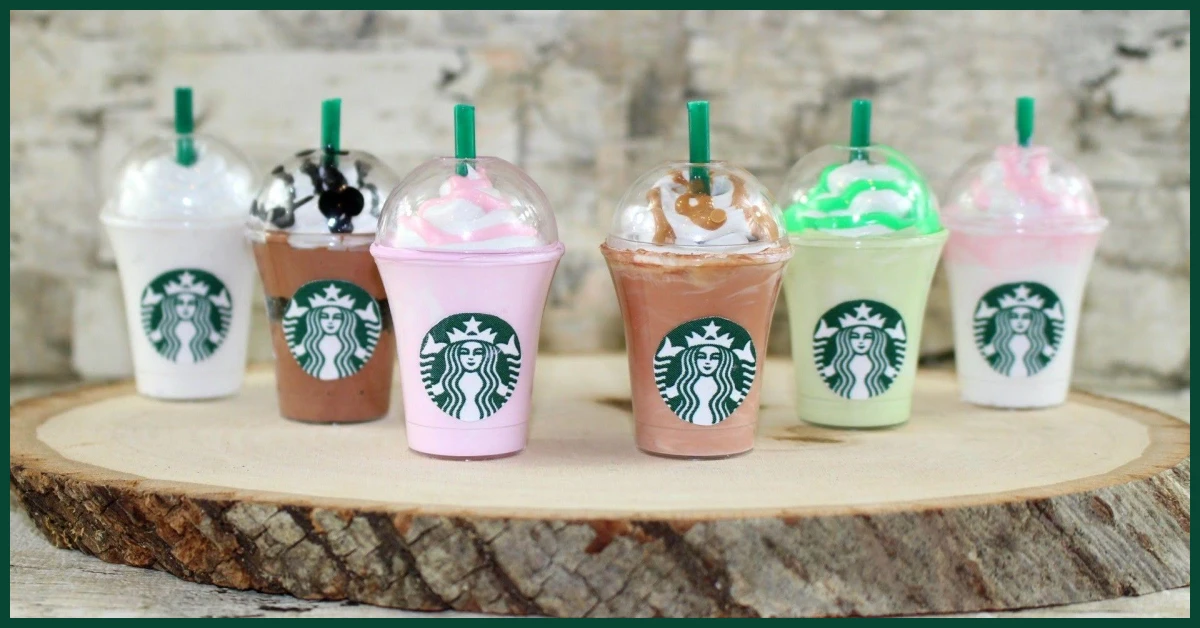
Now, let’s talk about expenses and profits. In 2023, expenses tallied up to $30.584 billion, but here’s the kicker – profits soared to $25.108 billion.
That’s like balancing a delicate espresso shot with a mountain of whipped cream.
In a nutshell, Starbucks isn’t just brewing coffee; it’s a financial powerhouse, stirring up a caffeinated storm in the business world.
(C) History of Starbucks: Timeline & Key Events
Coming to the third part of the Starbucks case study, let’s delve into the history of Starbucks-
| Period | Year | Key Events |
| 20th Century | 1971 | Starbucks considers blockchain technology for bean-to-cup tracking. Two men were arrested in a Philadelphia store, leading to company-wide training. |
| 1976 | Starbucks moves its store to 1912 Pike Place. During this time, only coffee beans are sold, not drinks. | |
| 1984 | Original owners purchase Peet’s Coffee. | |
| 1987 | Howard Schultz, former marketing director, buys Starbucks and begins rapid expansion. The first locations outside Seattle open in Vancouver and Chicago. | |
| 1989 | Starbucks has 46 stores across the Pacific Northwest and Midwest, roasting over 2 million pounds of coffee annually. | |
| 1990s | 1992 | Starbucks goes public with 140 outlets and a market value of $271 million. |
| 1994 | Starbucks acquires The Coffee Connection, gaining rights to the “Frappuccino” beverage. Introduced under the Starbucks name in 1995. | |
| 1999 | Starbucks experiments with eateries under the Circadia brand. Also acquires Pasqua Coffee. | |
| 21st century | 2003 | Starbucks acquires Seattle’s Best Coffee and Torrefazione Italia. |
| 2006 | Starbucks purchases most of Diedrich Coffee’s retail stores. | |
| 2008 | Starbucks starts the “My Starbucks Idea” website and acquires a Coffee Equipment Company, introducing the Clover Brewing System. | |
| 2018 | The operator of Starbucks locations in Brazil, SouthRock Capital, declares bankruptcy, restructuring through the procedure. | |
| 2019 | Starbucks closes newspaper sales, and kiosks, and opens its largest store on Michigan Avenue, Chicago. | |
| 2020s | 2020 | Due to COVID-19, Starbucks temporarily closes café-only stores, facing sales decrease. |
| 2022 | Starbucks explores selling its UK stores. | |
| 2022 | Starbucks sells all its stores in Russia to Timati after months of suspension due to the Russian invasion of Ukraine. | |
| 2022 | Howard Schultz steps down as CEO; Laxman Narasimhan becomes the new CEO. | |
| 2023 | Narasimhan works as a barista to stay close to customers. Starbucks was ordered to pay damages in a discrimination case. | |
| 2023 | Operator of Starbucks locations in Brazil, SouthRock Capital, declares bankruptcy, restructuring through the procedure. |
Founded in 1971 by Jerry Baldwin, Zev Siegl, and Gordon Bowker at Seattle’s Pike Place Market, Starbucks underwent pivotal changes in ownership and leadership. In the early 1980s, Howard Schultz acquired the company and transformed it into a coffee shop, introducing espresso-based drinks after being inspired during a business trip to Milan, Italy.
Schultz served as CEO from 1986 to 2000, orchestrating an expansive franchise expansion across the West Coast.
Orin Smith succeeded Schultz, focusing on fair trade coffee and boosting sales to US$5 billion. Jim Donald took the helm from 2005 to 2008, overseeing substantial earnings expansion. Schultz returned during the 2007–08 financial crisis, steering the company towards growth, expanded offerings, and a commitment to corporate social responsibility. Kevin Johnson assumed the CEO role in 2017.
In March 2022, Starbucks announced Schultz’s return as interim CEO in April 2022, with Laxman Narasimhan appointed to succeed him in April 2023. Narasimhan assumed the position earlier, in March 2023.
Beyond beverages and food, Starbucks stores offer official merchandise and select locations to provide “Starbucks Evenings” with beer, wine, and appetizers. The company’s products, including coffee, ice cream, and bottled drinks, are available in grocery stores globally. The Starbucks Reserve program, initiated in 2010 for single-origin coffees and high-end shops, has evolved. Starbucks operates six roasteries with tasting rooms and 43 coffee bars.
The company faced controversies but maintains substantial brand loyalty, market share, and value. As of 2022, Starbucks ranks 120th on the Fortune 500 and 303rd on the Forbes Global 2000.
(D) Significance of Logo in Starbucks Case Study
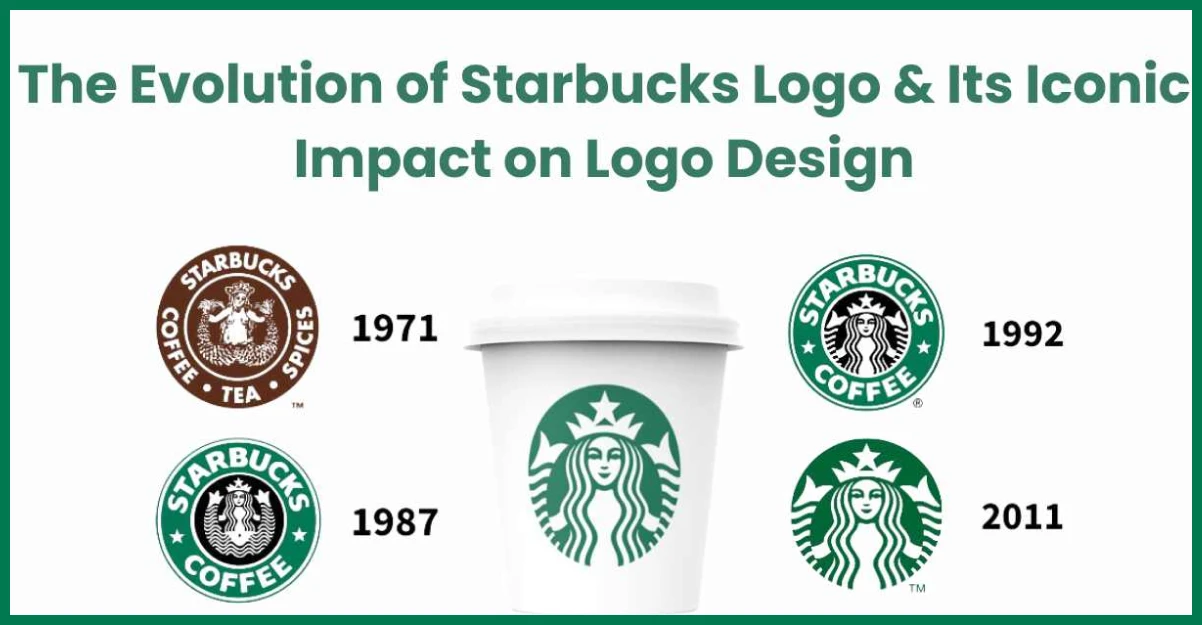
Let’s delve into the details of the Starbucks logo evolution. In its inception in 1971, the original Starbucks logo featured a complex design comprising a two-tailed mermaid or siren, encompassed by a wordmark. This design was a visual nod to the brand’s early identity and origins. The mermaid, with its twin tails, was a dual representation of the sea and Seattle, the birthplace of Starbucks.
As the brand progressed, the logo underwent a significant transformation. The evolution saw a shift towards simplicity, as the wordmark surrounding the mermaid was phased out. This marked the beginning of the modern Starbucks logo we recognize today.
The current emblem showcases a simplified and stylized green siren enclosed within a matching green ring, emphasizing a cleaner and more focused visual identity.
Beyond aesthetics, the modern logo carries symbolic weight. The green mermaid within the circle has become an iconic representation of Starbucks’ commitment to delivering high-quality coffee experiences.
Additionally, it reflects the brand’s emphasis on creating a sense of community that extends beyond geographical boundaries.
In essence, the evolution of the Starbucks logo is a journey from a detailed and intricate design to a streamlined and symbolic representation. It mirrors the brand’s growth, emphasizing its roots, dedication to quality, and the broader cultural impact it seeks to make through coffee and community.
(E) Market Penetration Strategy: How Starbucks became the coffee king?
In this section, we will look into the key plans and actions that helped Starbucks gain a strong foothold in the beverage and cafe industry.
| Starbucks Growth Plan | Description |
| Starbucks Expands with Peet’s Acquisition | In 1984, Starbucks, led by Jerry Baldwin, made a strategic move by acquiring Peet’s, a significant step in their journey. |
| Espresso’s Rise in the 1980s | During the 1980s, espresso sales in the U.S. were declining overall. However, a new trend emerged – the popularity of specialty espresso. By 1989, these specialty brews constituted 10% of the market, a notable increase from 3% in 1983. In 1986, Starbucks operated just six stores in Seattle and was only starting to sell coffee. |
| Schultz Takes the Reins | In 1987, the original owners handed over Starbucks to Howard Schultz, its former manager. Schultz swiftly rebranded his II Giornale espresso outlets as Starbucks, marking the beginning of an extensive expansion. Starbucks ventured beyond Seattle, opening outlets in Vancouver, British Columbia, and Chicago, Illinois. By 1989, the company had 46 stores spanning the Northwest and Midwest, roasting over 2 million pounds of coffee annually. |
| Starbucks Goes Public | In June 1992, Starbucks made its debut on the stock market with an initial public offering (IPO). At this point, Starbucks boasted 140 outlets and generated $73.5 million in revenue, a significant surge from $1.3 million in 1987. The IPO raised about $25 million, fueling a doubling of store numbers over the next two years. |
| Mobile Revolution and Tweet-a-Coffee | By July 2013, Starbucks embraced mobile technology, with over 10% of in-store purchases made through the Starbucks app. The company leveraged social media with the “Tweet-a-Coffee” campaign in October 2013, allowing users to gift a $5 voucher via Twitter. |
| Financial Success and Growth | As of 2018, Starbucks ranked 132nd on the Fortune 500 list. In July 2019, Starbucks reported a robust financial performance, with a third-quarter net income of $1.37 billion, representing a significant increase from the previous year. The company’s estimated value reached $110.2 billion, showing a remarkable 41% growth in 2019. |
Starbucks continues to blend innovation and growth, navigating the ever-changing landscape of the coffee industry.
(F) Starbucks Entry in India: Core of Starbucks Case Study
In 2012, Starbucks initiated its venture into India through a significant 50:50 joint venture with Tata Consumer Products Ltd. The inaugural flagship store, which opened its doors on October 19th, 2012, found its home in the historic Elphinstone Building in Mumbai.
The architectural design of this store ingeniously merged Starbucks’ global coffee legacy with the vibrant local culture, creating a welcoming space for community and connection. Over time, this Mumbai location evolved into India’s first Starbucks Reserve® Store, setting the stage for an elevated coffee experience.
(F.1) The Starbucks Reserve® Store Unveiled: A Coffee Lover’s Haven
The introduction of the Starbucks Reserve® Store marked a milestone in the coffee giant’s presence in India. Spanning an impressive 5,200 square feet, this store greeted customers with the intoxicating aroma of coffee.
The entrance featured a stunning monolithic terrazzo Reserve bar, a masterpiece crafted by local artisans. Trained black apron coffee masters curated an exceptional coffee experience, showcasing rare and exquisite brews through various brewing methods.
This Reserve Store was not just a coffee shop; it was a canvas for creating unique moments of connection through the artistry of coffee.
(F.2) Expanding Horizons: Tata Starbucks’ Nationwide Presence
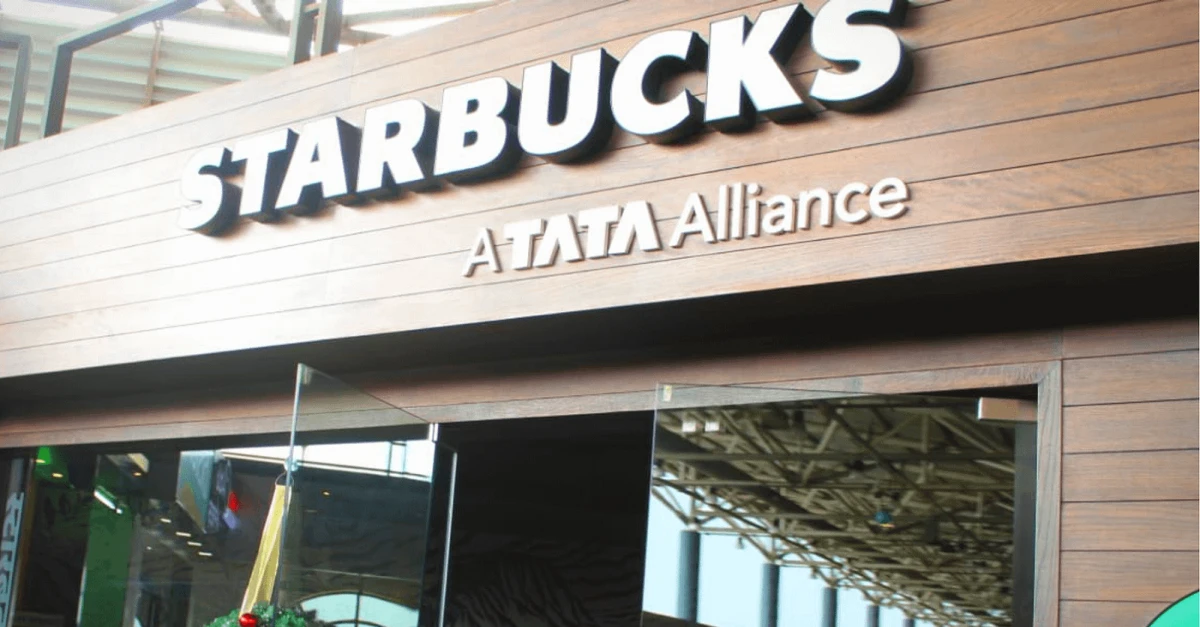
Tata Starbucks established a substantial footprint, operating 350+ stores spread across 36 cities in India. In a significant achievement in 2022, Starbucks executed its largest single-year expansion in India, reaching 14 new cities. The brand’s influence spanned major cities such as Mumbai, Delhi NCR, Hyderabad, Chennai, Bengaluru, Pune, and more.
(F.3) Coffee Blends Celebrating Indian Flavors and Heritage
Starbucks paid homage to India’s rich coffee heritage by introducing special blends. The India Estates Blend, sourced from estates in Coorg and Chikmagalur, the birthplace of coffee in India, made its debut in 2013. Additionally, the Diwali Blend, introduced in 2020, served as a tribute to India’s vibrant culture and longstanding coffee traditions.
(F.4) The Tata Alliance: A Successful Partnership
Starbucks in India proudly bore the branding “Starbucks Coffee – A Tata Alliance,” underscoring the synergy between Starbucks and Tata Global Beverages.
Starbucks’ journey in India was not merely about coffee; it was about brewing connections, transcending cultural boundaries, and crafting unforgettable coffee experiences that resonated with the diverse tapestry of India.
(G) Business and Marketing Strategies of Starbucks in India
Starbucks, despite entering India’s coffee scene with strong strategies, faced challenges in a market dominated by competitors like Cafe Coffee Day and Barista Lavazza. Unlike the U.S., where coffee is a staple, India is traditionally a tea-drinking country.
Starbucks aimed to create a space for relaxation, blending its global coffee legacy with local culture.
Let’s look at the business and marketing strategies of Starbucks in India-
| Marketing Strategies of Starbucks | Details |
| Strategic Partnership with Tata Global Beverages | Choosing TATA Global Beverages as a local partner showcased Starbucks’ understanding of leveraging indigenous advantages. This partnership allowed Starbucks to source beans from Tata’s Karnataka plant, ensuring cost-effectiveness and synergy. The TATA group’s ethical brand image aligned well with Starbucks’ values. |
| Consistency in Store Arrangements | Starbucks maintained a consistent store layout across India, focusing on customer experience and benefiting from economies of scale on capital expenses. This approach differentiated Starbucks from competitors like Cafe Coffee Day, which experimented with various formats. |
| The pace of Expansion Tailored for Financial Feasibility | Starbucks adopted a measured pace of expansion, focusing on the financial viability of each outlet. This approach contrasted with its aggressive expansion strategy in the U.S. and China. Starbucks prioritized the long-term sustainability of each location in the Indian market. |
| Top Leadership Commitment and Collaboration | The commitment from top leadership, both from Tata and Starbucks, played a crucial role in Starbucks’ cautious entry into the Indian market. The six-year planning period showcased a thorough understanding of the complex Indian market. |
| Customizing Offerings to Suit Local Tastes | Adapting to Indian culture, Starbucks offered a mix of Western staples and unique Indian snacks, ensuring relevance and sustained consumption. The “third place” concept was tailored with local touches, such as henna designs in New Delhi’s store and collectibles in Pune’s store. |
| Local Partnerships for Sustainable Sourcing | Starbucks established a localized business model, emphasizing sustainability in coffee sourcing. The collaboration with Tata facilitated not only sourcing advantages but also an investment in sustainable farming practices. |
| Innovative Product Launches and Partnerships | Starbucks introduced Indian-style products, including Tandoori Paneer Roll and Chocolate Rossomalai Mousse, catering to local tastes. Collaborating with Tata Global Beverages, Starbucks launched the “Teavana” tea brand, with offerings specifically crafted for the Indian market. |
| Navigating Regulatory Challenges | Starbucks proactively managed perceptions and adhered to regulations by suspending the use of ingredients not approved by the Food Safety and Standards Authority of India (FSSAI). This demonstrated a commitment to transparency and compliance. |
| Localization and Community Engagement | Starbucks embraced localization not only in in-store designs but also in hiring and training local staff. This approach enhanced community engagement and facilitated seamless integration into the Indian market. |
In short, Starbucks’ journey in India reflects a careful blend of global strategies and localized approaches, aiming to create a unique and sustainable presence in a market with diverse preferences and cultural nuances. The success indicators appear promising, showcasing Starbucks’ commitment to long-term growth and meaningful community integration.
Note: Do you know Starbucks collaborated with Apple during the horizontal marketing in the US? We have covered it thoroughly here- Horizontal Marketing System. You can check it out for detailed information.
(H) Wrapping Up the Case Study of Starbucks
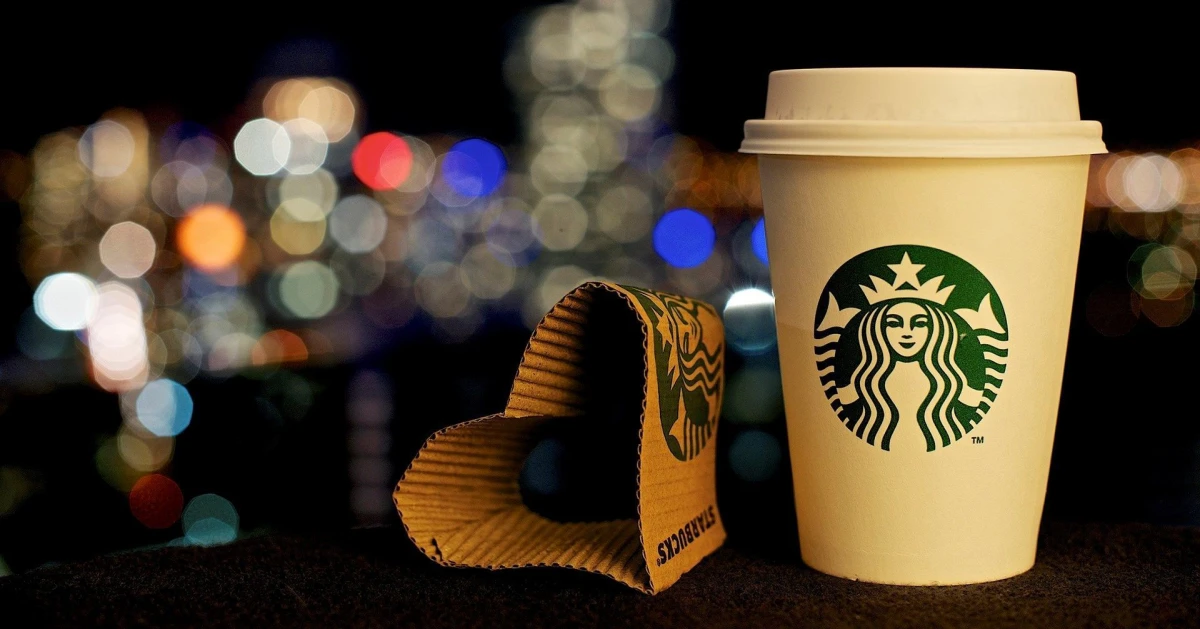
The Case Study of Starbucks unveils a fascinating journey that transformed Starbucks into the reigning coffee king. What started as a local coffee bean store in Seattle’s Pike Place Market in 1971 boomed into a global coffee empire. The strategic moves, like Howard Schultz’s visionary shift to espresso-based drinks, had set the stage for Starbucks’ aggressive expansion.
Throughout its evolution, Starbucks faced challenges, leadership changes, and controversies, but resilience and strategic pivots marked its trajectory. The decision to focus on corporate social responsibility under Schultz’s leadership during the financial crisis showcased Starbucks’ adaptability.
The engagement with local cultures, from the iconic two-tailed mermaid symbol to store designs reflecting regional aesthetics, contributed to Starbucks’ success. Key partnerships, like the one with TATA in India, demonstrated a keen understanding of local markets.
Starbucks’ commitment to quality, community, and sustainability resonated with consumers globally. From unique store experiences to tailored product launches, Starbucks consistently adapted its offerings to cater to diverse tastes.
In essence, the Case Study of Starbucks illuminates a narrative of coffee, community, and corporate strategy, culminating in Starbucks’ reign as the coffee king.
The journey is a testament to the power of adaptability, brand loyalty, and a steaming cup of coffee that transcends borders, making Starbucks an integral part of daily rituals worldwide!

